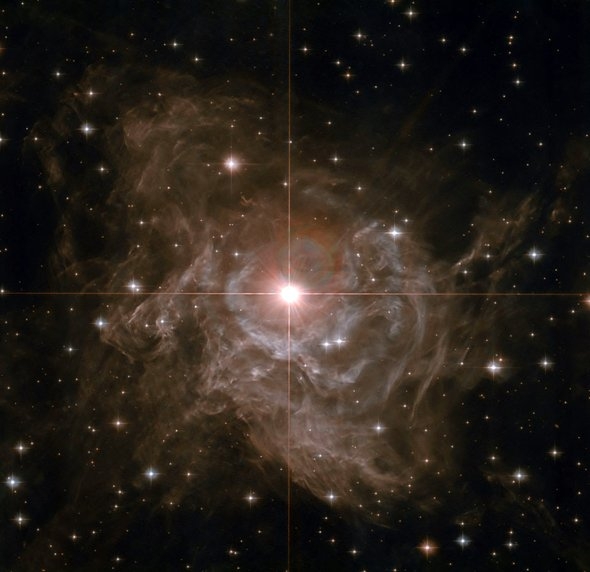Best-Yet Measurements Deepen Cosmological Crisis

The Cepheid variable star RS Puppis, as seen by the Hubble Space Telescope. Such stars are crucial rungs on the “cosmic distance ladder,” a method for measuring vast intergalactic distances and the universe’s rate of expansion. Credit: NASA, ESA, and the Hubble Heritage Team. Processing by Stephen Byrne
The latest disagreement over the universe’s expansion rate suggests researchers may be on the threshold of revolutionary discoveries
By Anil Ananthaswamy on March 22, 2019
A long-running dispute about how fast our universe is expanding just became even more entrenched. New and more precise measurements of stars in the Large Magellanic Cloud, a satellite galaxy of the Milky Way, have only strengthened the differences between two independent methods of calculating the expansion rate.
This impasse may soon force cosmologists to reexamine the “standard model” of cosmology, which tells us about the composition of the universe (radiation, normal matter, dark matter and dark energy) and how it has evolved over time.
For about five years now, two projects have been at odds over the value of the Hubble constant (H0), the rate at which the universe is expanding. One relies on studies of the cosmic microwave background (CMB), the relic afterglow from the hot, dense plasma that suffused the universe shortly after the big bang. The other project uses a potpourri of more “local” measurements, which constitute the so-called cosmic distance ladder.
See full text